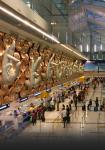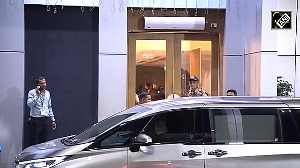Outsourcing Product Development is set to emerge as a $8-11 billion industry by 2009 from the current $3 billion market estimates.
Sensing the opportunity here, Indian OPD players are now focusing on 'usability' as a core offering to move up the value chain. The premise is that only 35 per cent of any application is utilised by end-users. The remaining 65 per cent lacks 'usability'.
"The focus of usability engineering is on the end user, where every product whether software or hardware is rated on the basis of how well can it be used by the end user," explains Vardha Raju, vice-president, Symphony Services.
He further adds, "Generally definition of quality products is bug free products, but that is not the only measure. Ease of use is equally important."
"Client penetration, new customer wins and more importantly, climbing up in the value chain and addressing strategic issues for our clients," says Jhumkee Iyenger, head (Usability), Persistent Technologies which started offering usability engineering as an important components in the initial stages of the product development lifecycle over a year ago to its clients.
"We expect the number of our customers using this service to double from 15 to 30 in the next 12 months," she asserts.
Usability was earlier closely associated only with design of web sites, computer portals, car dashboards, etc. However, over the years it is becoming popular within the IT/ BPO industry.
BPOs employ usability engineering to design their processes where all three parties - client, employees and company - benefit from the ease of use resulting in the process.
The benefits are evident. If a company allocates 10 per cent resources, they can double the quality (usability) of the end product. Usability engineering is a science and the returns can be measured.
For instance, the redesigning of the software interface used by customer representatives of a US-based telecom company in Bangalore by OPD player, Persistent Technologies, reportedly saves the telco $700,000 per annum besides reducing the effort and number of steps taken to complete the process by 50 per cent.
The importance of this concept can also be guaged from the fact that software companies like Microsoft have full-fledged dedicated teams of over 800 usability engineers.
For Indian companies, though, this is hitherto an unexplored field. Infosys is the biggest user of usability in the country and has a team of nearly 100 people besides outsourcing to specialist companies like Onio Design.
iFlex has 10 usability engineers on its rolls, a fact that Makarand Padalkar, chief of staff and investor relations attributes to its core banking product winning many a awards.
Overal, there are only 1,000 to 1,500 usability engineers employed here, whereas the country should have recruited at least 150,000 such specialists by now, according to Jacob Neilson - an author, researcher, and consultant on usability.
By 2008, India will require to employ four lakh usability professionals in the IT/ BPO industry to generate $63 billion in export earnings, he predicts.
Dinesh Katre, group coordinator (Human Computer Interaction Design), C-DAC's, National Multimedia Resource Centre says, "The community of usability professionals is growing at 20 per cent annually which is far too less.
"Even though there are six to eight new design schools that have opened in the last two to three years besides the four to five older institutes like National Institute of Design, Srishti School of Design, collectively they contribute for 250-300 usability professionals annually." He adds, "India can sustain at least 500 design schools."







 © 2025
© 2025